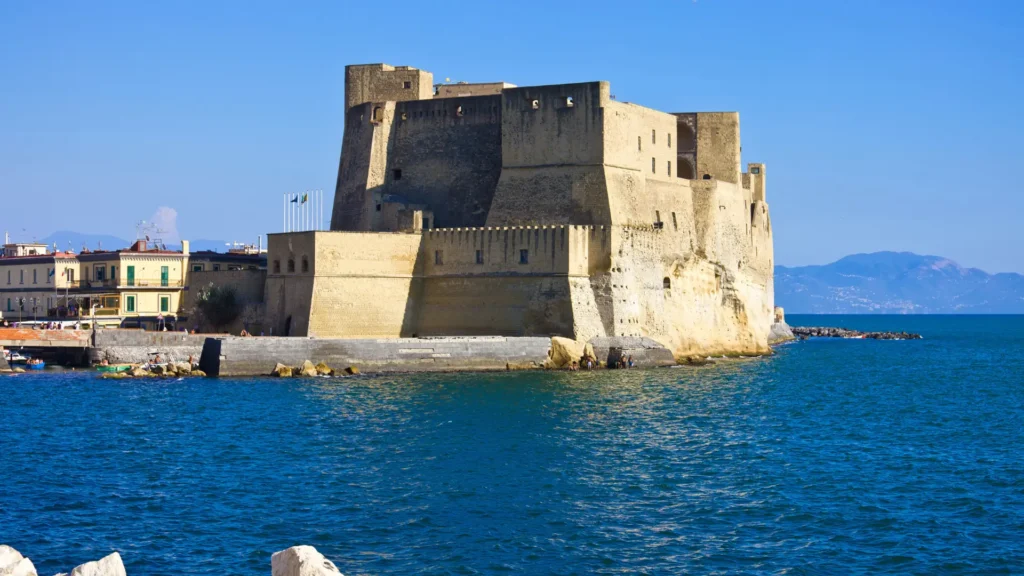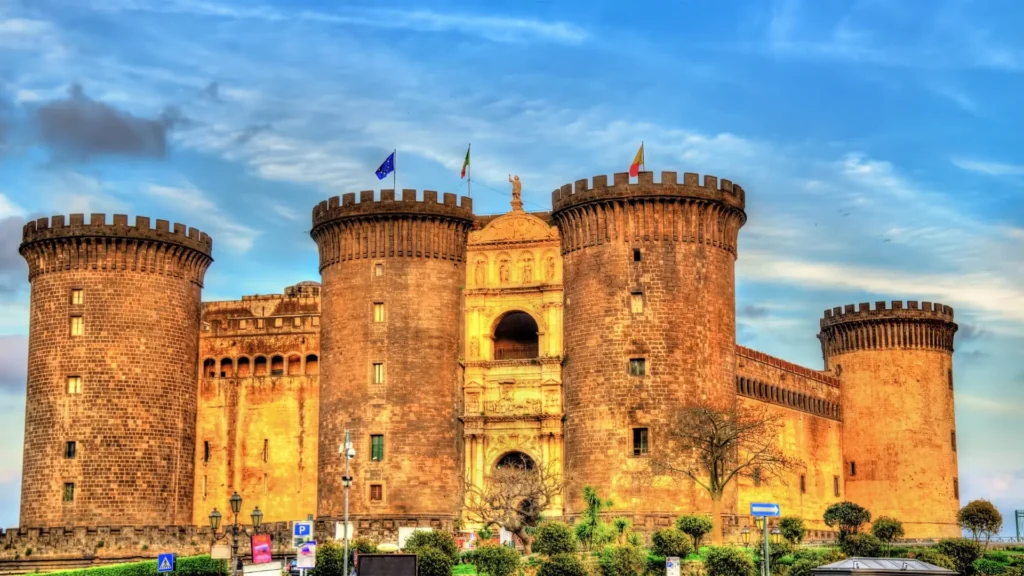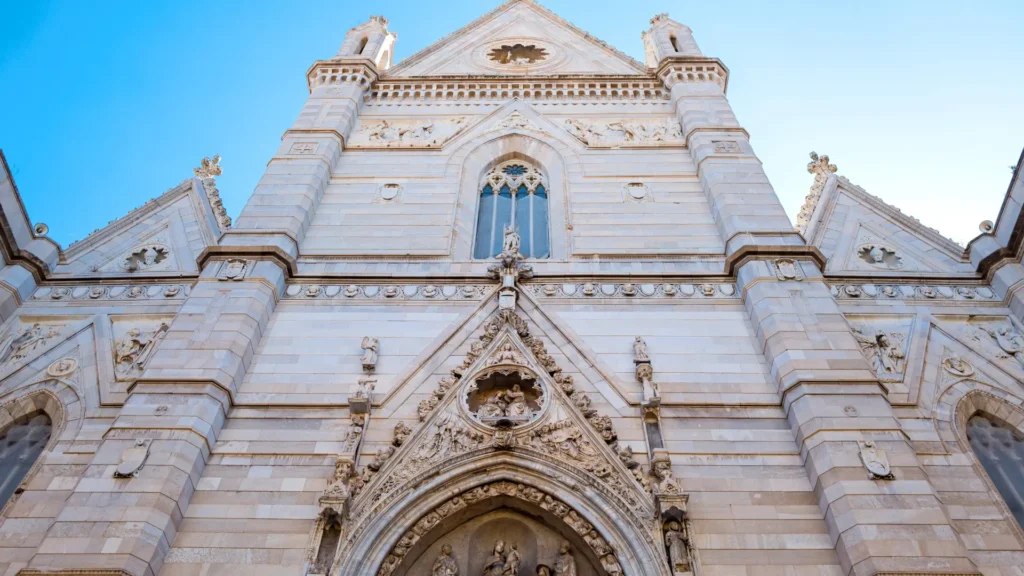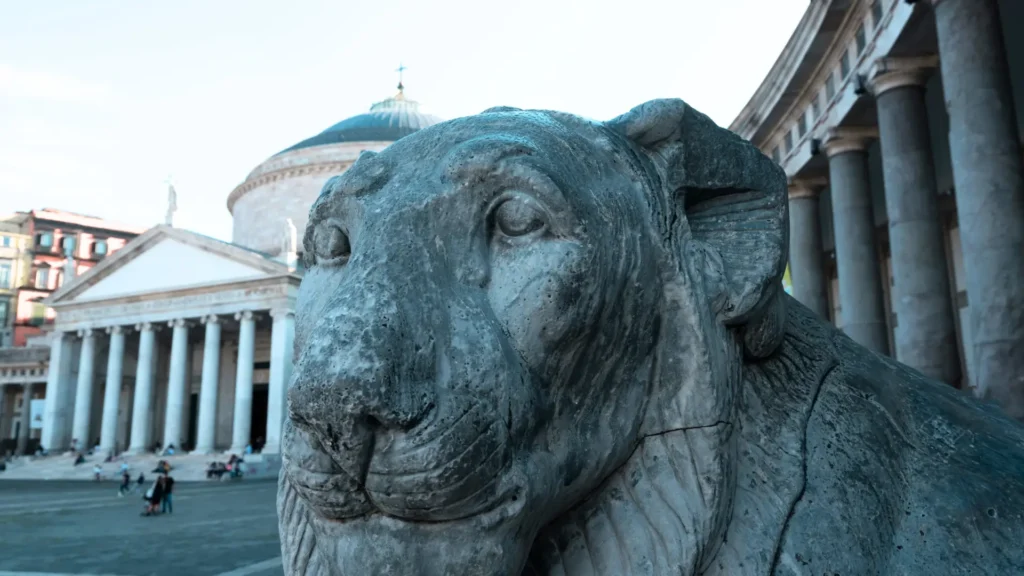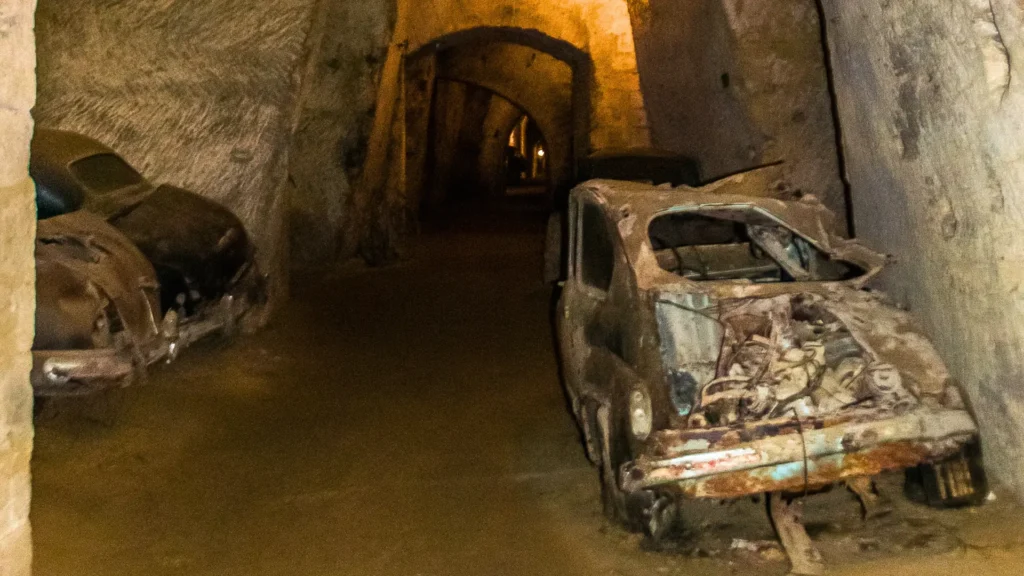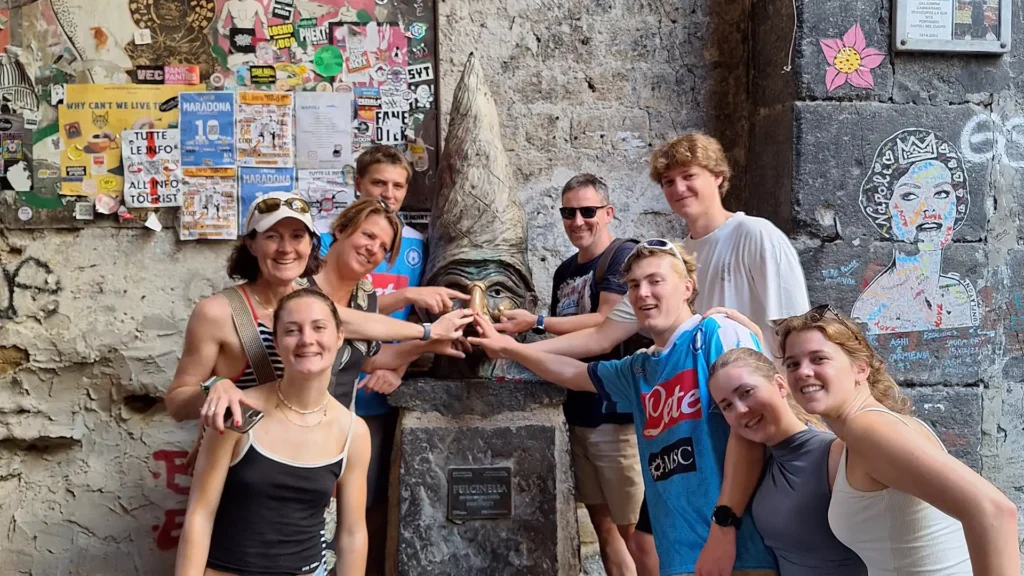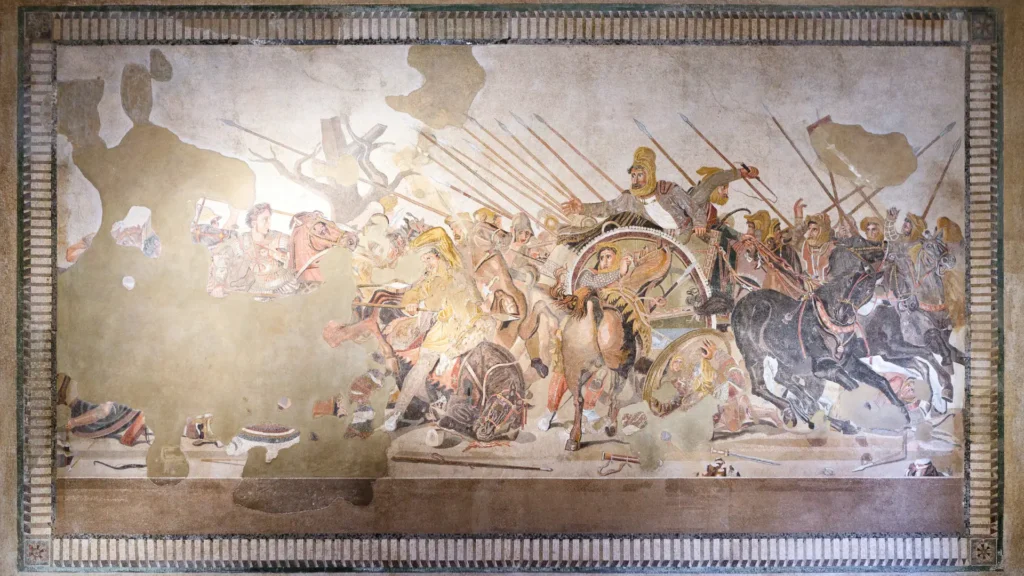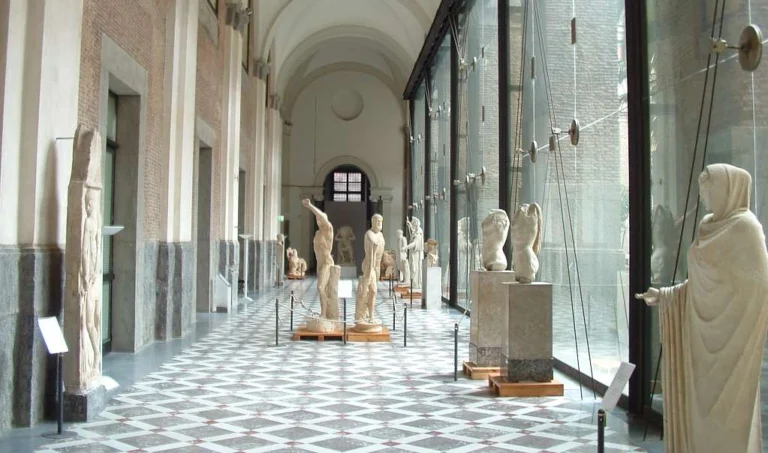Naples is a city steeped in history, where ancient ruins, medieval castles, and Baroque splendor coexist in a fascinating blend of past and present. Walking through its streets feels like a journey through centuries of art, culture, and architectural grandeur. From Roman remains to Bourbon palaces, every corner tells a story of power, resilience, and artistic brilliance. Here are some of the most iconic historical landmarks you shouldn’t miss when visiting Naples.
Castel dell’Ovo
Standing on a small island connected to the mainland by a causeway, Castel dell’Ovo is the oldest castle in Naples. It offers stunning views of the Gulf of Naples and Mount Vesuvius, making it a must-visit landmark. Dating back to Roman times, the site was originally a villa before becoming a fortress. According to legend, the poet Virgil hid a magical egg within its foundations—if broken, it was said to bring disaster to Naples.
Castel Nuovo (Maschio Angioino)
Located near the port of Naples, Castel Nuovo is a striking medieval fortress known for its impressive Renaissance-style triumphal arch at the entrance. Inside, visitors can explore historic halls, art displays, and a small museum that narrates the castle’s fascinating history.
Sansevero chapel
The Sansevero Chapel is a Baroque gem in the heart of Naples, famous for its extraordinary sculptures and rich artistic heritage. Its most renowned masterpiece is the Veiled Christ, a breathtaking marble sculpture by Giuseppe Sanmartino, celebrated for its intricate details that make the veil appear almost transparent.
Naples cathedral (Duomo di Napoli)
The Duomo di Napoli is a Gothic masterpiece and the main cathedral of the city. Inside, the Chapel of San Gennaro holds the relics of Naples’ patron saint. Each year, the miraculous blood liquefaction of San Gennarois celebrated in a ceremony that draws locals and visitors alike, showcasing the city’s deep spiritual traditions.
Piazza del Plebiscito
One of Naples’ most iconic public spaces, Piazza del Plebiscito is a vast and elegant square surrounded by historic landmarks. Framed by the Royal Palace and theBasilica of San Francesco di Paola, its majestic architecture makes it a perfect spot for photos and leisurely strolls. This grand square is a symbol of Naples’ rich history and a must-visit for those looking to soak in the city’s charm.
The Bourbon tunnel (Galleria Borbonica)
Built in the 19th century as a military escape route, the Bourbon Tunnel has played a crucial role in Naples’ history. During World War II, it served as a bomb shelter, providing refuge to thousands of Neapolitans. Today, visitors can explore its underground passages, where wartime artifacts, historic graffiti, and abandoned vehicles offer a haunting glimpse into the past.
Spaccanapoli
Running straight through Naples’ historic center, Spaccanapoli is a narrow, lively street that divides the old town in two. Lined with centuries-old churches, grand palaces, and bustling local shops, it offers a true immersion into the city’s soul. Walking along Spaccanapoli means experiencing Naples’ unique energy, rich history, and vibrant daily life, all in one place.
The National Archaeological Museum of Naples
The National Archaeological Museum of Naples (MANN) is one of the world’s most important museums for ancient art and culture. Located in the heart of Naples, it houses an extensive collection of Greek, Roman, and Egyptian artifacts. Among its treasures are the remarkable finds from Pompeii and Herculaneum, exquisite mosaics, impressive sculptures, and the famous Secret Cabinet, a collection of erotic art from ancient Rome.
Exploring Naples’ historical landmarks is like peeling back the layers of a city shaped by centuries of art, culture, and history. From ancient ruins and medieval castles to Baroque masterpieces, each site reveals a different chapter of Naples’ fascinating past. Walking through these landmarks offers a deep connection to the city’s legacy, making every visit a journey through time.
Tips for exploring Naples’ historical landmarks
Make your visit with me
I can create a personalized itinerary to connect these landmarks seamlessly, ensuring you experience the best of Naples’ history
Start early
Many sites can get crowded, so visiting in the morning allows for a more relaxed experience
Stay comfortable
Wear sturdy footwear, as Naples’ cobblestone streets can be uneven
